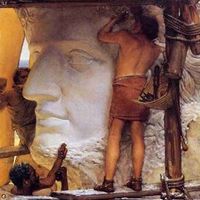
Gy Tis
Address: Kaunas, Kauno Apskritis, Lithuania
less
Related Authors
Liutauras Nekrošius
Vilnius Gediminas Technical University
Giedrė Jankevičiūtė
Vilnius Academy of Arts
Kotryna Indrė Šurkutė
Vytautas Magnus University
Viktorija Kurienė
Vilnius University
Indrė Gudelytė-Račienė
Vilnius Gediminas Technical University
InterestsView All (6)
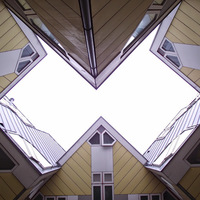


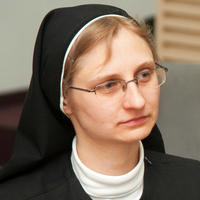



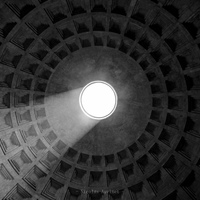
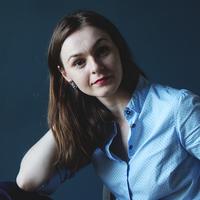

Uploads
Papers by Gy Tis
suvokti tiek būdus, kuriais menų sintezės idėja buvo pasitelkta propagandos tikslams, tiek propagandos ribas peržengiančią monumentaliosios bei taikomosios dailės kūrėjų motyvaciją. Straipsnyje atlikta šaltinių analizė padeda įsisąmoninti pokario Lietuvoje vykusią menų sintezės sampratos kaitą, sudariusią sąlygas pasireikšti
kūrėjų asmeniniam braižui, kūrinių raiškos inovatyvumui bei sąlyginiam politiniam neutralumui. Pirmą kartą atliekama Kultūros vertybių registro duomenų analizė atskleidė, kad politiškai neideologizuotus kūrinius
atpažinti leidžiantys kriterijai iki šiol apskritai neturėjo įtakos kūrinių įpaveldinimui, lygiai taip pat, kaip ir formalus kultūros vertybėms taikomas 50 metų amžiaus cenzas. Stokojant bendros vertybinės strategijos bei
spartėjant kūrinių naikinimo tendencijoms, menų sintezės kūrinių įpaveldinimo bei apskaitos strategijos yra atskiros ir skirtingos. Straipsnyje atlikta analizė demonstruoja, kaip sistemiško ir kontekstualaus požiūrio stokojančios pavienės pastangos išsaugoti kūrinius, taip pat prieštara tarp specifiškai architektūrai kurtų darbų
ir jų kaip atskirų objektų įpaveldinimo, daro lemtingą įtaką ne formaliam, bet faktiniam kūrinių išsaugojimui.
RAKTAŽODŽIAI: Lietuvos monumentalioji dailė, menų sąveika, menų sintezė, XX a. II pusės architektūra ir dailė
The article aims to present the trends in cultural heritagisation of artworks of the synthesis of the arts, a prominent phenomenon of Lithuanian architecture of the second half of the twentieth century. In post-war Lithuania, synthesis of arts was encouraged: as it enabled the evelopment of the branches of monumental and applied art, it was generally accepted that the surviving artworks of these branches were of historical and iconographic value. Nevertheless, these works could also be linked to the social engineering programme of the occupying Soviet government. The
article evaluates the origins of the idea of the synthesis of the arts and its adaptation in the Soviet Union, which provides an understanding of both the ways in which the idea of the synthesis of
the arts was used for propaganda purposes and the motivation of the creators of monumental and applied art that transcended the boundaries of propaganda. The analysis of the sources carried out in the article allows grasping the shift in the concept of the synthesis of the arts
that took place in post-war Lithuania, which created the conditions for the manifestation of the personal character of art, the innovativeness of the expression, and conditional political neutrality. For the first time, the analysis of the data of the Register of Cultural Property was conducted to reveal that neither the criteria allowing recognition of non-ideological works nor the usual “50 years of age” requirement had a prominent impact on deciding which artworks should be declared cultural heritage in Lithuania. Due to the lack of a consistent value-based strategy and the acceleration of the destruction of the art of the Soviet period, the strategies for the identification and cultural heritagisation of art synthesis artworks are sporadic and inconsistent. The analysis carried out in the article demonstrates how uncoordinated efforts to preserve such artworks, lacking in systematic and contextual approach, as well as the contradiction between works created specifically for architecture and their treatment as detachable objects, have a fatal impact on their actual (not formal) preservation.
KEYWORDS: Lithuanian monumental art, interaction of arts, synthesis of arts, architecture of the second half of the twentieth century
The impression previously conveyed by researchers that in the 1920s traditional architecture was employed on nearly all new buildings throughout Kaunas, contrasting sharply with the wave of modernism in the following decade, needs to be contested. In fact, both styles of construction are known to be applied, frequently by the same architect working on two projects almost simultaneously. This is borne out by the large number of examples in the article, which paints an innovative picture of Kaunas' interwar architecture.
In addition, especially in the 1930s, and especially in public edifices, it became increasingly common for both modernist and retrospective, traditional stylistic features to be employed on the same building. This is generally interpreted as an attempt by the young state of Lithuania to refer to its historical legitimacy via the medieval grand duchy of the same name, and also to prove its contemporary viability and openness to the rest of the world.
A gradual shift from traditional to modernist style preferences, which indeed take place, is reflected by the long planning history of the Church of Resurrection, destined to become an architectural symbol of country's independence gained in 1918. While buildings such as this church (which was only completed in the post-Soviet era) have been throughly studied, the opposite applies to numerous interwar private buildings, some of which were designed by architects whose names are not even verifiable.
time they emerged until the time they materialized in architectural design.
sodų ir parkų architektūros bruožai iracionaliojoje architektūroje. Istorinių rezidencijų sodų architektūroje
vyravo kaprizų (angl. folly) tradicija, kurią pradėjo Romos imperatoriaus Hadriano vila, buvusi pirmoji erdvės
ir meninio laiko požiūriu visiškai fiktyvi pramogų erdvė. Vėliau meninė fikcija aktualizuota iracionaliosiose
modernios architektūros kryptyse, kur išlaikyta orientacija į dirbtinį laiko (ateities) įvaizdį bei tie patys
meniniai principai: gamtos ir žmogaus darbo formų sugretinimas, menų sintezė ir vizionieriškumas.
REIKŠMINIAI ŽODŽIAI: iracionalizmas, sodų architektūra, istorinė bei naujienybės (sensacijos) architektūra.
SUMMARY
KEYWORDS: irrationalism, garden architecture, historical
and novelty architecture.
The article addresses the topic of the influence of garden
(later, park) architecture on the development of irrational
architecture. Irrationalism in architecture was not formed
as a separate trend or movement, but served as a response
to the attempt to universalize the main principles of
artistic suggestion of architecture and to rationalize the
construction process. Usually irrationalism is described
by the categories of expressivity, decorativeness, sculptural
character, unconventionality, intuition, individual
approach, indefiniteness, randomness and synthesis of
arts, and the emphasis on artistic fiction can be indicated
as a common feature of irrational architecture. Gardens,
in which the architectural expression of buildings was not limited by functional requirements, were a favorable
medium for implementing this principle in the course of
history.
As a reactive trend, irrational architecture emerged
already in early history. The villa of the Roman emperor
Hadrian in Tivoli can be considered one of the first
examples of irrational garden architecture. The villa
conveyed the ruler’s individual approach: it can be
seen as a prototype of an entertainment park, in which
architecture was removed from reality both in its fictional
space and fictional past-oriented artistic time. Despite
all this, architecture that embodied the emperor’s ideas
was innovative in terms of construction and engineering
solutions. The ruins of this villa and the newly discovered
Golden Palace of emperor Nero made a tremendous
influence on late Renaissance artistic worldview. The
image of architecture possessed by nature – grotesque –
was expressed in garden pavilions as a symbol of the
relation between random natural forms and creative
human consciousness. As a manifestation of the synthesis
of arts, not only architects, but also artists and sculptors
were invited to create such buildings. The tradition
of mannerist gardens was passed on to many parks of
European rulers’ residences via the Versailles, but the
source of architectural follies can be directly related to
Hadrian’s villa.
As the influence of monarchies subsided, the parks
of nobles’ residences began to be transformed into public
spaces. In these spaces, unconventional sensationalist
or novelty architecture was created – the artistic time
of architecture became future-oriented. Visionary
architecture was presented in spaces for exhibitions and
fairs. These spaces gradually became a substitute for public
parks, and the buildings constructed there contributed
to significant shifts in the development of architecture.
Architectural parks remain an experimental space of
artistically suggestive irrational architecture, in which the
newest technologies that still cannot be applied in largescale
buildings are implemented. However, at the same
time, the principles of juxtaposing natural and manmade
forms, interdisciplinarity or synthesis of arts, and the
emphasis on artistic fiction, formed in the tradition of
garden architecture in the course of centuries, are still
actualized in contemporary irrational architecture.
Reikšminiai žodžiai: vietos dvasia, genius loci, šiuolaikinės architektūros savitumas.
Summary. The article is intended to evaluate the contradictions in the understanding of the widely used concept of genius loci. The first part of the work is devoted to the overview of the development of the concept of the "local spirit", i.e. the first global architectural theoretical pieces, which provided varied understanding and perception of this concept. The second part reviews the impact, which the definition of genius loci had on shaping common principles for the protection of cultural heritage. The third part is devoted to the peculiarities of the interpretation of genius loci in Lithuania – the analysis of various examples illustrates how the global architectural theory works are often applied to justify expressions of buildings designed in specific historical areas and how the concept of genius loci is defined in some local architectural research. The findings of the article assess the limitations of the perception of genius loci and propose some further guidelines for the study of this concept.
kad naujai kuriamos architektūros pabrėžtina inovacija arba perteiktas tradicijų tęsinys gali būti išnaudotas reikiamai kultūrinei žiniai perteikti. Viduramžių architektūroje progresas laiko tėkmėje nustojo aktualumo,
kadangi krikščioniškoji kultūra tikėjo baigtine laiko koncepcija su nulemta pradžia ir pabaiga. Architektūra organiškai plėtojosi iki pat XVIII a., kai buvo suformuota architektūros stilių teorija. Šiuo laikotarpiu
buvo įtikėta, kad naujai kuriama retrospektyvi architektūra gali lygiomis teisėmis atstovauti praėjusiems architektūros stiliams. Tačiau iki XX a. pr. plėtota stilių raidos teorija visus istorinius architektūros stilius
traktavo vienodai – kaip dekoro priemonę, į kurią buvo suformuotas reaktyvus, tačiau vienodas modernizmo stilius. Stilių raidos teorija yra ribota, kadangi itin originali, bendrų stiliaus nuostatų neatitinkanti architektūra lieka neįvertinta. Todėl šiuolaikinės architektūros progresas turi būti vertinamas alternatyviai: kaip cikliškos architektūros tendencijų kaitos bei vyraujančio kultūrinio daugybingumo apraiška. Šios sąlygos
yra ypatingai palankios originaliai nestandartinei architektūros raiškai rastis.
This article examines the connection between the originality of architecture and the idea of time progress from the start of professional Western architecture to contemporary architecture. The Ancient Greeks already knew how to exploit traditional similitude or highlighted innovation in architecture in order to express the necessary cultural message. Architectural progress was no longer so important during medieval period, because Christian culture established a finite concept of time, according to which both past and future were equally revealed. The progress of architecture was spontaneous up until 17th century, when the theory of architectural styles was established. During this period newly created retrospective architecture was considered to be equal to the architecture of past styles. However, at the beginning of 20th century architectural styles were diluted into one theory of decoration, which provoked the arrival of new uniform modernist architectural style. However, the theory of architectural styles is limited, because especially original architecture does not follow common established rules of architectural style. As such contemporary
architecture must be evaluated by alternative concepts of progress, such as cyclic rotation of architectural trends and an established pluralism. Those circumstances are especially favorable for the rise of nonstandard architectural expression.
Prasminiai žodžiai: istorinių stilių interpretacija, modernizmas, postmodernizmas.
Interpretation of historical styles is examined as a creative method of innovative architecture. Contradictions with provisions of heritage preservation institutions and context of contemporary architectural
movements in Lithuania are analysed. Aspects of semantics, architectural narrative as important features of architectural interpretation are researched.
Key words: interpretation of historical styles, modernism, postmodernism
The research is divided into three parts. First, interpretation of historical styles is evaluated and compared with other retrospective architectural trends of XIX – XX centuries. The fluctuation of the way retrospectivism is accepted in architecture is examined. Retrospective post-modern architecture should not be considered as anti – modern trend of architecture, conversely, it represents multiple trend of contemporary architecture.
In second part characteristics of architectural interpretation are examined. Social and cultural factors influencing retrospective architecture are evaluated. The typology of architectural interpretation is defined, by which examples of interpretation of historical styles in contemporary Lithuanian architecture are examined. Keywords: historical styles of architecture, historism, postmodernism, retrospectivism, architectural interpretation, contemporary Lithuanian architecture.
Vienas iš svarbiausių istorinės architektūros bruožų - gebėjimas meninėmis priemonėmis perteikti visuomenines, politines ir religines idėjas. Senovės graikų architektūroje šios tendencijos aktualizuotos pirką kartą Vakarų uropos istorijoje. Nepaisant to, turime suvokti, kad senovės graikų kultūra buvo sudaryta iš dveijų politiškai ir kultūriškai kardinaliai skirtingų periodų, kuriuose architektūros unikalumas atliko skirtingą vaidmenį. Pavyzdžių analizė atskleidžia, kad klasikinio laikotarpio architektūroje atspindėta transcendentinė tobulumo idėja: architektūra turėjo būti ne originali, bet atitinkanti rafinuotus proporcijų reikalavimus. Kurtos visuomeniškos, viešąsias erdves formuojančios, aktualias politines idėjas metaforiškai perteikiančios kompozicijos. Helenizmo laikotarpiu architektūra buvo nedviprasmiškai skirta fundatoriaus galiai ir menininko galimybėms pademonstruoti. Architektūra neteko savo transcendentinio įvaizdžio, jos dominančių raiškai didelę įtaką darė pastatų dydis, išryškinta situacija ir aiškiai išreikštas politinis įvaizdis.
architecture and the most prominent example of architectural symbolism, St. Peter and St. Paul’s Church in Vilnius (1668–1702)
has been selected for the research. The iconographic programme of this church is compared to most distinct iconographic themes identified through the analysis of some examples of historic Christian architecture. By this method, the research detaches from the usual stylistic analysis and poses the most basic question in architectural artistry: is architecture capable of expressing the independent artistic content which can translate more than architecture’s general appearance.
Keywords: historic Christian architecture, meta-codal function, architectural symbolism, Pisa Cathedral, Chartres Cahedral, Hagia Sophia
suvoktos kaip antropomorfinis architektūros aspektas: net ir šiandien jos laikomos architektūros kompozicijos pagrindu.
Nepaisant to, šiuolaikinės postmodernizmo ir dekonstruktyvizmo architektūros kūrėjai bei kritikai akcentuoja erdvinio naratyvo,
kuriamo ne tik erdvės percepcijos, bet ir erdvės santykio su socialinėmis ir kultūrinėmis reikšmėmis, svarbą. Naratyvo,
kaip architektūros kompozicinės ypatybės, naudojamos dekonstruktyvizmo ir postmodernizmo architektūros kompozicijose, pavyzdžių galime aptikti tiek užsienyje, tiek Lietuvoje.
Reikšminiai žodžiai: naratyvas, dekonstruktyvizmas, postmodernizmas, šiuolaikinė ir istorinė architektūra.
One of the most important features in historical architectural
compositions is geometrical rendition of architectural space and volume. This feature was highlighted in terms of architecture of Modernism. According to the theory of modern architecture and
Geschtalt Psychology, elementary geometrical forms and main
spatial features were underlined and accepted as anthropomorphic principle of architecture. Even today main spatial characteristics are accepted as a key principle of architectural composition. However, architects and critics of contemporary – post-modern and deconstructive – architecture emphasize the value of architectural
narrative achieved not only through perception of space,
but also by its relationship to social and cultural meanings and subtext of architecture. A narrative, as architectural feature, is realized in some compositions of the deconstructivist and postmodern architecture, both worldwide and in Lithuania.
Keywords: Deconstructivism, Postmodernism, narrative, contemporary
and historical architecture.
nuo jų stilistinių bruožų. Pasirinkti būdingieji žinomiausi įvairių laikotarpių ansambliai pasižymi viena kompozicine ypatybe
– erdvės naratyvu. Numatyta formų patyrimo seka, erdvės sandara pasakoja skirtingą religinį pasakojimą, priklausomai nuo
to, kokie tikėjimo aspektai buvo aktualizuoti konkrečiu metu. Analizuojami pavyzdžiai įrodo, kad religinių aspektų įtaigumas
sakralinėje architektūroje yra neatsiejamas nuo meninės įtaigos aspektų. Kita vertus, tam tikrais atvejais šie aspektai yra mažiau
susiję su stilistinėmis architektūros priemonėmis, bet turi tiesioginį ryšį su tokiomis kompozicinėmis priemonėmis, kaip
numatyta lankytojo patyrimo seka ir formų semantika, t. y. erdvės naratyvo, kuriamo ne tik erdvės percepcijos priemonėmis,
bet ir santykiu su socialinėmis ir kultūrinėmis reikšmėmis.
Reikšminiai žodžiai: erdvės naratyvas, religinė sakralinė architektūra, struktūros analizė, istorinė ir šiuolaikinė architektūra.
The paper analyses architectural compositions of various religious complexes – historical and contemporary – apart from their stylistic features. The most prominent ensembles under analysis have one noticeably common feature – spatial narrative. The foreseen sequence of forms of experience and spatial structure
tell different religious narratives depending on which different aspects of faith were actualized in a given period. The analyzed examples stand in proof that suggestibility of religious aspects in sacral architecture are inseparable from their artistic suggestibility
aspects. In some cases, these aspects are less related to
architectural stylistic means, but have a direct connection to such components of architectural compositions as foreseen sequence of a visitor’s experience and semantics of particular forms, i.e.
architectural narrative, which is achieved not only through the means of perception of space, but also by the relationship to social and cultural meanings and subtext of architecture.
Keywords: spatial narrative, analysis of structure, sacral religious architecture, contemporary and historical architecture.
suvokti tiek būdus, kuriais menų sintezės idėja buvo pasitelkta propagandos tikslams, tiek propagandos ribas peržengiančią monumentaliosios bei taikomosios dailės kūrėjų motyvaciją. Straipsnyje atlikta šaltinių analizė padeda įsisąmoninti pokario Lietuvoje vykusią menų sintezės sampratos kaitą, sudariusią sąlygas pasireikšti
kūrėjų asmeniniam braižui, kūrinių raiškos inovatyvumui bei sąlyginiam politiniam neutralumui. Pirmą kartą atliekama Kultūros vertybių registro duomenų analizė atskleidė, kad politiškai neideologizuotus kūrinius
atpažinti leidžiantys kriterijai iki šiol apskritai neturėjo įtakos kūrinių įpaveldinimui, lygiai taip pat, kaip ir formalus kultūros vertybėms taikomas 50 metų amžiaus cenzas. Stokojant bendros vertybinės strategijos bei
spartėjant kūrinių naikinimo tendencijoms, menų sintezės kūrinių įpaveldinimo bei apskaitos strategijos yra atskiros ir skirtingos. Straipsnyje atlikta analizė demonstruoja, kaip sistemiško ir kontekstualaus požiūrio stokojančios pavienės pastangos išsaugoti kūrinius, taip pat prieštara tarp specifiškai architektūrai kurtų darbų
ir jų kaip atskirų objektų įpaveldinimo, daro lemtingą įtaką ne formaliam, bet faktiniam kūrinių išsaugojimui.
RAKTAŽODŽIAI: Lietuvos monumentalioji dailė, menų sąveika, menų sintezė, XX a. II pusės architektūra ir dailė
The article aims to present the trends in cultural heritagisation of artworks of the synthesis of the arts, a prominent phenomenon of Lithuanian architecture of the second half of the twentieth century. In post-war Lithuania, synthesis of arts was encouraged: as it enabled the evelopment of the branches of monumental and applied art, it was generally accepted that the surviving artworks of these branches were of historical and iconographic value. Nevertheless, these works could also be linked to the social engineering programme of the occupying Soviet government. The
article evaluates the origins of the idea of the synthesis of the arts and its adaptation in the Soviet Union, which provides an understanding of both the ways in which the idea of the synthesis of
the arts was used for propaganda purposes and the motivation of the creators of monumental and applied art that transcended the boundaries of propaganda. The analysis of the sources carried out in the article allows grasping the shift in the concept of the synthesis of the arts
that took place in post-war Lithuania, which created the conditions for the manifestation of the personal character of art, the innovativeness of the expression, and conditional political neutrality. For the first time, the analysis of the data of the Register of Cultural Property was conducted to reveal that neither the criteria allowing recognition of non-ideological works nor the usual “50 years of age” requirement had a prominent impact on deciding which artworks should be declared cultural heritage in Lithuania. Due to the lack of a consistent value-based strategy and the acceleration of the destruction of the art of the Soviet period, the strategies for the identification and cultural heritagisation of art synthesis artworks are sporadic and inconsistent. The analysis carried out in the article demonstrates how uncoordinated efforts to preserve such artworks, lacking in systematic and contextual approach, as well as the contradiction between works created specifically for architecture and their treatment as detachable objects, have a fatal impact on their actual (not formal) preservation.
KEYWORDS: Lithuanian monumental art, interaction of arts, synthesis of arts, architecture of the second half of the twentieth century
The impression previously conveyed by researchers that in the 1920s traditional architecture was employed on nearly all new buildings throughout Kaunas, contrasting sharply with the wave of modernism in the following decade, needs to be contested. In fact, both styles of construction are known to be applied, frequently by the same architect working on two projects almost simultaneously. This is borne out by the large number of examples in the article, which paints an innovative picture of Kaunas' interwar architecture.
In addition, especially in the 1930s, and especially in public edifices, it became increasingly common for both modernist and retrospective, traditional stylistic features to be employed on the same building. This is generally interpreted as an attempt by the young state of Lithuania to refer to its historical legitimacy via the medieval grand duchy of the same name, and also to prove its contemporary viability and openness to the rest of the world.
A gradual shift from traditional to modernist style preferences, which indeed take place, is reflected by the long planning history of the Church of Resurrection, destined to become an architectural symbol of country's independence gained in 1918. While buildings such as this church (which was only completed in the post-Soviet era) have been throughly studied, the opposite applies to numerous interwar private buildings, some of which were designed by architects whose names are not even verifiable.
time they emerged until the time they materialized in architectural design.
sodų ir parkų architektūros bruožai iracionaliojoje architektūroje. Istorinių rezidencijų sodų architektūroje
vyravo kaprizų (angl. folly) tradicija, kurią pradėjo Romos imperatoriaus Hadriano vila, buvusi pirmoji erdvės
ir meninio laiko požiūriu visiškai fiktyvi pramogų erdvė. Vėliau meninė fikcija aktualizuota iracionaliosiose
modernios architektūros kryptyse, kur išlaikyta orientacija į dirbtinį laiko (ateities) įvaizdį bei tie patys
meniniai principai: gamtos ir žmogaus darbo formų sugretinimas, menų sintezė ir vizionieriškumas.
REIKŠMINIAI ŽODŽIAI: iracionalizmas, sodų architektūra, istorinė bei naujienybės (sensacijos) architektūra.
SUMMARY
KEYWORDS: irrationalism, garden architecture, historical
and novelty architecture.
The article addresses the topic of the influence of garden
(later, park) architecture on the development of irrational
architecture. Irrationalism in architecture was not formed
as a separate trend or movement, but served as a response
to the attempt to universalize the main principles of
artistic suggestion of architecture and to rationalize the
construction process. Usually irrationalism is described
by the categories of expressivity, decorativeness, sculptural
character, unconventionality, intuition, individual
approach, indefiniteness, randomness and synthesis of
arts, and the emphasis on artistic fiction can be indicated
as a common feature of irrational architecture. Gardens,
in which the architectural expression of buildings was not limited by functional requirements, were a favorable
medium for implementing this principle in the course of
history.
As a reactive trend, irrational architecture emerged
already in early history. The villa of the Roman emperor
Hadrian in Tivoli can be considered one of the first
examples of irrational garden architecture. The villa
conveyed the ruler’s individual approach: it can be
seen as a prototype of an entertainment park, in which
architecture was removed from reality both in its fictional
space and fictional past-oriented artistic time. Despite
all this, architecture that embodied the emperor’s ideas
was innovative in terms of construction and engineering
solutions. The ruins of this villa and the newly discovered
Golden Palace of emperor Nero made a tremendous
influence on late Renaissance artistic worldview. The
image of architecture possessed by nature – grotesque –
was expressed in garden pavilions as a symbol of the
relation between random natural forms and creative
human consciousness. As a manifestation of the synthesis
of arts, not only architects, but also artists and sculptors
were invited to create such buildings. The tradition
of mannerist gardens was passed on to many parks of
European rulers’ residences via the Versailles, but the
source of architectural follies can be directly related to
Hadrian’s villa.
As the influence of monarchies subsided, the parks
of nobles’ residences began to be transformed into public
spaces. In these spaces, unconventional sensationalist
or novelty architecture was created – the artistic time
of architecture became future-oriented. Visionary
architecture was presented in spaces for exhibitions and
fairs. These spaces gradually became a substitute for public
parks, and the buildings constructed there contributed
to significant shifts in the development of architecture.
Architectural parks remain an experimental space of
artistically suggestive irrational architecture, in which the
newest technologies that still cannot be applied in largescale
buildings are implemented. However, at the same
time, the principles of juxtaposing natural and manmade
forms, interdisciplinarity or synthesis of arts, and the
emphasis on artistic fiction, formed in the tradition of
garden architecture in the course of centuries, are still
actualized in contemporary irrational architecture.
Reikšminiai žodžiai: vietos dvasia, genius loci, šiuolaikinės architektūros savitumas.
Summary. The article is intended to evaluate the contradictions in the understanding of the widely used concept of genius loci. The first part of the work is devoted to the overview of the development of the concept of the "local spirit", i.e. the first global architectural theoretical pieces, which provided varied understanding and perception of this concept. The second part reviews the impact, which the definition of genius loci had on shaping common principles for the protection of cultural heritage. The third part is devoted to the peculiarities of the interpretation of genius loci in Lithuania – the analysis of various examples illustrates how the global architectural theory works are often applied to justify expressions of buildings designed in specific historical areas and how the concept of genius loci is defined in some local architectural research. The findings of the article assess the limitations of the perception of genius loci and propose some further guidelines for the study of this concept.
kad naujai kuriamos architektūros pabrėžtina inovacija arba perteiktas tradicijų tęsinys gali būti išnaudotas reikiamai kultūrinei žiniai perteikti. Viduramžių architektūroje progresas laiko tėkmėje nustojo aktualumo,
kadangi krikščioniškoji kultūra tikėjo baigtine laiko koncepcija su nulemta pradžia ir pabaiga. Architektūra organiškai plėtojosi iki pat XVIII a., kai buvo suformuota architektūros stilių teorija. Šiuo laikotarpiu
buvo įtikėta, kad naujai kuriama retrospektyvi architektūra gali lygiomis teisėmis atstovauti praėjusiems architektūros stiliams. Tačiau iki XX a. pr. plėtota stilių raidos teorija visus istorinius architektūros stilius
traktavo vienodai – kaip dekoro priemonę, į kurią buvo suformuotas reaktyvus, tačiau vienodas modernizmo stilius. Stilių raidos teorija yra ribota, kadangi itin originali, bendrų stiliaus nuostatų neatitinkanti architektūra lieka neįvertinta. Todėl šiuolaikinės architektūros progresas turi būti vertinamas alternatyviai: kaip cikliškos architektūros tendencijų kaitos bei vyraujančio kultūrinio daugybingumo apraiška. Šios sąlygos
yra ypatingai palankios originaliai nestandartinei architektūros raiškai rastis.
This article examines the connection between the originality of architecture and the idea of time progress from the start of professional Western architecture to contemporary architecture. The Ancient Greeks already knew how to exploit traditional similitude or highlighted innovation in architecture in order to express the necessary cultural message. Architectural progress was no longer so important during medieval period, because Christian culture established a finite concept of time, according to which both past and future were equally revealed. The progress of architecture was spontaneous up until 17th century, when the theory of architectural styles was established. During this period newly created retrospective architecture was considered to be equal to the architecture of past styles. However, at the beginning of 20th century architectural styles were diluted into one theory of decoration, which provoked the arrival of new uniform modernist architectural style. However, the theory of architectural styles is limited, because especially original architecture does not follow common established rules of architectural style. As such contemporary
architecture must be evaluated by alternative concepts of progress, such as cyclic rotation of architectural trends and an established pluralism. Those circumstances are especially favorable for the rise of nonstandard architectural expression.
Prasminiai žodžiai: istorinių stilių interpretacija, modernizmas, postmodernizmas.
Interpretation of historical styles is examined as a creative method of innovative architecture. Contradictions with provisions of heritage preservation institutions and context of contemporary architectural
movements in Lithuania are analysed. Aspects of semantics, architectural narrative as important features of architectural interpretation are researched.
Key words: interpretation of historical styles, modernism, postmodernism
The research is divided into three parts. First, interpretation of historical styles is evaluated and compared with other retrospective architectural trends of XIX – XX centuries. The fluctuation of the way retrospectivism is accepted in architecture is examined. Retrospective post-modern architecture should not be considered as anti – modern trend of architecture, conversely, it represents multiple trend of contemporary architecture.
In second part characteristics of architectural interpretation are examined. Social and cultural factors influencing retrospective architecture are evaluated. The typology of architectural interpretation is defined, by which examples of interpretation of historical styles in contemporary Lithuanian architecture are examined. Keywords: historical styles of architecture, historism, postmodernism, retrospectivism, architectural interpretation, contemporary Lithuanian architecture.
Vienas iš svarbiausių istorinės architektūros bruožų - gebėjimas meninėmis priemonėmis perteikti visuomenines, politines ir religines idėjas. Senovės graikų architektūroje šios tendencijos aktualizuotos pirką kartą Vakarų uropos istorijoje. Nepaisant to, turime suvokti, kad senovės graikų kultūra buvo sudaryta iš dveijų politiškai ir kultūriškai kardinaliai skirtingų periodų, kuriuose architektūros unikalumas atliko skirtingą vaidmenį. Pavyzdžių analizė atskleidžia, kad klasikinio laikotarpio architektūroje atspindėta transcendentinė tobulumo idėja: architektūra turėjo būti ne originali, bet atitinkanti rafinuotus proporcijų reikalavimus. Kurtos visuomeniškos, viešąsias erdves formuojančios, aktualias politines idėjas metaforiškai perteikiančios kompozicijos. Helenizmo laikotarpiu architektūra buvo nedviprasmiškai skirta fundatoriaus galiai ir menininko galimybėms pademonstruoti. Architektūra neteko savo transcendentinio įvaizdžio, jos dominančių raiškai didelę įtaką darė pastatų dydis, išryškinta situacija ir aiškiai išreikštas politinis įvaizdis.
architecture and the most prominent example of architectural symbolism, St. Peter and St. Paul’s Church in Vilnius (1668–1702)
has been selected for the research. The iconographic programme of this church is compared to most distinct iconographic themes identified through the analysis of some examples of historic Christian architecture. By this method, the research detaches from the usual stylistic analysis and poses the most basic question in architectural artistry: is architecture capable of expressing the independent artistic content which can translate more than architecture’s general appearance.
Keywords: historic Christian architecture, meta-codal function, architectural symbolism, Pisa Cathedral, Chartres Cahedral, Hagia Sophia
suvoktos kaip antropomorfinis architektūros aspektas: net ir šiandien jos laikomos architektūros kompozicijos pagrindu.
Nepaisant to, šiuolaikinės postmodernizmo ir dekonstruktyvizmo architektūros kūrėjai bei kritikai akcentuoja erdvinio naratyvo,
kuriamo ne tik erdvės percepcijos, bet ir erdvės santykio su socialinėmis ir kultūrinėmis reikšmėmis, svarbą. Naratyvo,
kaip architektūros kompozicinės ypatybės, naudojamos dekonstruktyvizmo ir postmodernizmo architektūros kompozicijose, pavyzdžių galime aptikti tiek užsienyje, tiek Lietuvoje.
Reikšminiai žodžiai: naratyvas, dekonstruktyvizmas, postmodernizmas, šiuolaikinė ir istorinė architektūra.
One of the most important features in historical architectural
compositions is geometrical rendition of architectural space and volume. This feature was highlighted in terms of architecture of Modernism. According to the theory of modern architecture and
Geschtalt Psychology, elementary geometrical forms and main
spatial features were underlined and accepted as anthropomorphic principle of architecture. Even today main spatial characteristics are accepted as a key principle of architectural composition. However, architects and critics of contemporary – post-modern and deconstructive – architecture emphasize the value of architectural
narrative achieved not only through perception of space,
but also by its relationship to social and cultural meanings and subtext of architecture. A narrative, as architectural feature, is realized in some compositions of the deconstructivist and postmodern architecture, both worldwide and in Lithuania.
Keywords: Deconstructivism, Postmodernism, narrative, contemporary
and historical architecture.
nuo jų stilistinių bruožų. Pasirinkti būdingieji žinomiausi įvairių laikotarpių ansambliai pasižymi viena kompozicine ypatybe
– erdvės naratyvu. Numatyta formų patyrimo seka, erdvės sandara pasakoja skirtingą religinį pasakojimą, priklausomai nuo
to, kokie tikėjimo aspektai buvo aktualizuoti konkrečiu metu. Analizuojami pavyzdžiai įrodo, kad religinių aspektų įtaigumas
sakralinėje architektūroje yra neatsiejamas nuo meninės įtaigos aspektų. Kita vertus, tam tikrais atvejais šie aspektai yra mažiau
susiję su stilistinėmis architektūros priemonėmis, bet turi tiesioginį ryšį su tokiomis kompozicinėmis priemonėmis, kaip
numatyta lankytojo patyrimo seka ir formų semantika, t. y. erdvės naratyvo, kuriamo ne tik erdvės percepcijos priemonėmis,
bet ir santykiu su socialinėmis ir kultūrinėmis reikšmėmis.
Reikšminiai žodžiai: erdvės naratyvas, religinė sakralinė architektūra, struktūros analizė, istorinė ir šiuolaikinė architektūra.
The paper analyses architectural compositions of various religious complexes – historical and contemporary – apart from their stylistic features. The most prominent ensembles under analysis have one noticeably common feature – spatial narrative. The foreseen sequence of forms of experience and spatial structure
tell different religious narratives depending on which different aspects of faith were actualized in a given period. The analyzed examples stand in proof that suggestibility of religious aspects in sacral architecture are inseparable from their artistic suggestibility
aspects. In some cases, these aspects are less related to
architectural stylistic means, but have a direct connection to such components of architectural compositions as foreseen sequence of a visitor’s experience and semantics of particular forms, i.e.
architectural narrative, which is achieved not only through the means of perception of space, but also by the relationship to social and cultural meanings and subtext of architecture.
Keywords: spatial narrative, analysis of structure, sacral religious architecture, contemporary and historical architecture.